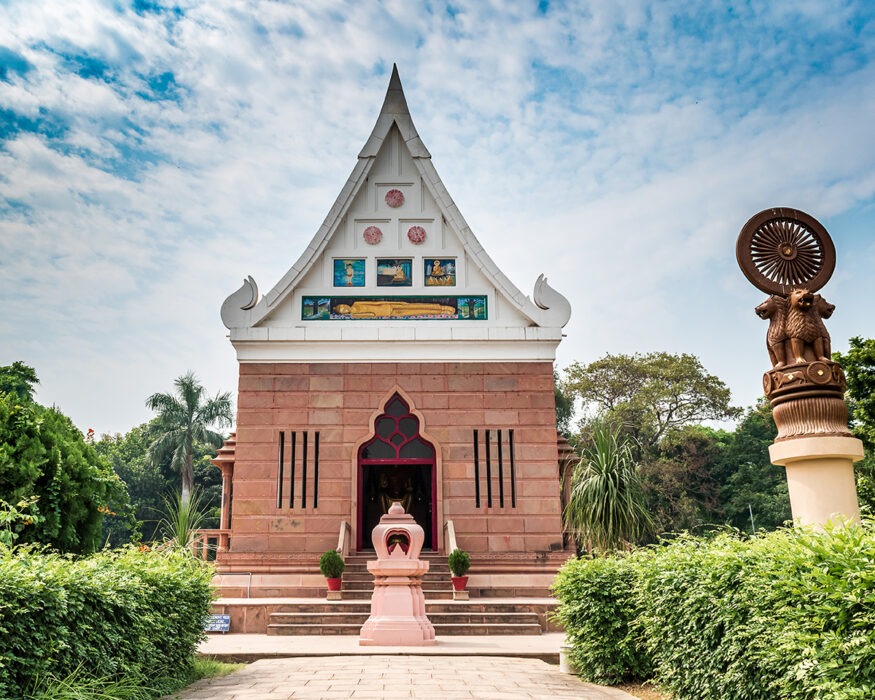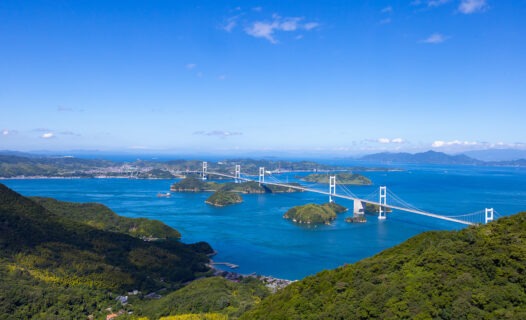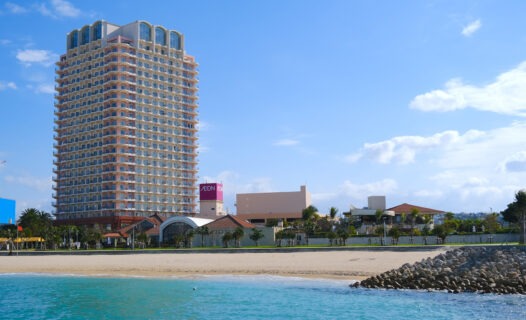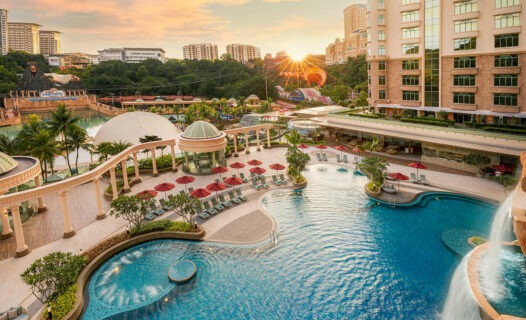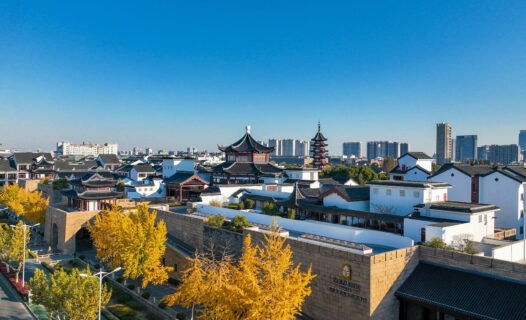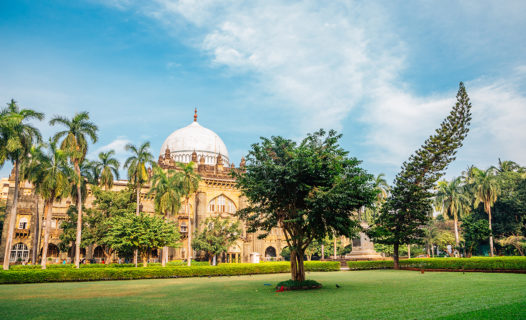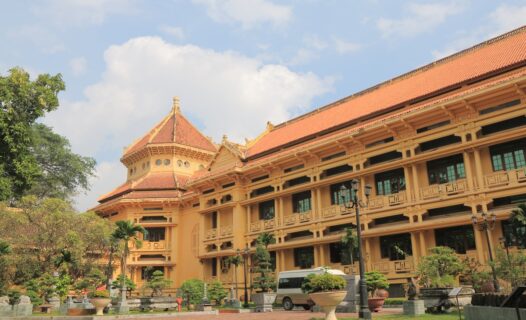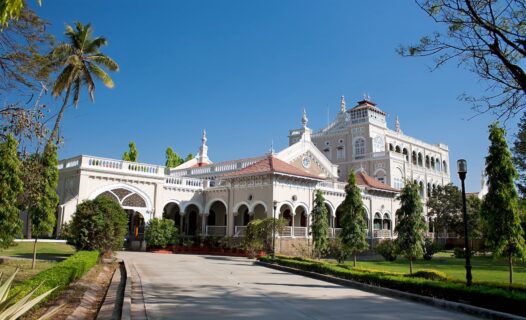Introduction
India is a land steeped in history, where every corner tells a story of valor, sacrifice, and the indomitable spirit of its freedom fighters. As we approach Independence Day, the significance of visiting the landmarks associated with these heroic figures becomes even more poignant. These sites are not just historical markers; they are reminders of the struggles and triumphs that shaped the nation we know today. Whether you’re a history buff or a curious traveler, exploring these freedom fighters landmarks allows you to connect deeply with India’s rich tapestry of patriotism and resilience.
Imagine standing at the very spot where Mahatma Gandhi led his followers in a march for freedom or gazing upon the walls that held brave souls captive during colonial rule. This Independence Day, why not take a journey through history and visit these historical sites in India? Each landmark offers a unique glimpse into the past and a powerful reminder of the sacrifices made for the liberty we cherish today.
Discover the Freedom Fighters’ Trail: Top Historical Sites to Visit
Ready to set off on an adventure through India’s history? Here’s a look at some iconic landmarks that are must-visits for anyone wanting to pay homage to our freedom fighters.
Sabarmati Ashram: A Hub of Nonviolent Resistance
First on our list is the Sabarmati Ashram, located in Ahmedabad, Gujarat. This serene spot was the residence of Mahatma Gandhi and served as a base for many pivotal movements during the Indian independence struggle. The Ashram symbolizes the power of nonviolent resistance and is a testament to Gandhi’s philosophy of peace and harmony. Walking through its tranquil grounds, you can almost hear the echoes of Gandhi’s teachings on truth and nonviolence.
This iconic landmark in India is more than just a historical site; it’s a place for reflection and inspiration. Visitors can explore the museum that showcases Gandhi’s life, his writings, and the very essence of the freedom movement. Don’t forget to stop by the riverbank, where you can take a moment to soak in the peaceful surroundings and imagine the fervor that once filled these grounds.
Cellular Jail: The Dark Chapter of Colonial Rule
Next, we venture to the Cellular Jail in the Andaman Islands, a grim reminder of the harsh realities faced by freedom fighters. Known as ‘Kala Pani’ (Black Water), this prison was notorious for its brutal conditions and solitary confinement. Many brave souls were imprisoned here, enduring unimaginable suffering for the sake of India’s freedom.
Today, the Cellular Jail stands as a poignant memorial to those who sacrificed their lives for the nation. As you walk through its somber corridors, you’ll feel the weight of history pressing down on you. The light and sound show conducted in the evenings beautifully narrates the tales of valor and sacrifice, making it a must-see for anyone interested in the freedom struggle monuments of India.
Jallianwala Bagh: A Site of Sacrifice
Another significant place in Indian history is Jallianwala Bagh in Amritsar, Punjab. This memorial park commemorates the tragic events of April 13, 1919, when British troops opened fire on a peaceful gathering of Indians protesting against oppressive laws. The massacre left a deep scar on the Indian psyche and galvanized the independence movement.
As you enter the garden, you’ll find a well-preserved memorial that honors the lives lost that day. The poignant atmosphere invites reflection on the sacrifices made for freedom. The bullet marks on the walls serve as a chilling reminder of the brutality faced by our ancestors. Visiting Jallianwala Bagh is not just an exploration of a significant place in Indian history; it is a heartfelt tribute to the resilience of those who fought for our rights.
Red Fort: The Symbol of Sovereignty
Last but certainly not least, we have the majestic Red Fort in Delhi. This UNESCO World Heritage site is not only an architectural marvel but also a symbol of India’s sovereignty. It was here, on August 15, 1947, that Jawaharlal Nehru unfurled the national flag, marking the dawn of a new era for India.
The fort’s stunning red sandstone walls and intricate designs make it a popular destination for tourists and history enthusiasts alike. As you stroll through its expansive courtyards and gardens, take a moment to imagine the fervor of that historic day. The Red Fort is not just a national heritage site in India; it’s a living testament to the spirit of freedom and unity that binds us all.
Thematic Itinerary: Day-by-Day Exploration of Freedom Fighters’ Landmarks
Ready for an unforgettable adventure through India’s rich history? Here’s a week-long itinerary that will take you to some of the most significant sites tied to our freedom fighters. Each day is packed with exploration, reflection, and a touch of patriotism!
Day 1: Arrival in Delhi and Visit to Red Fort
Your journey begins in the heart of India—Delhi! Upon arrival, check into your hotel and prepare to step back in time at the Red Fort. This magnificent structure is not just a UNESCO World Heritage site; it’s where India’s first Prime Minister, Jawaharlal Nehru, proclaimed independence on August 15, 1947. Explore the fort’s impressive architecture and picturesque gardens, and don’t forget to snap a selfie with the iconic fort as your backdrop!
As the sun sets, consider a stroll through Chandni Chowk, where you can indulge in some delicious street food or shop for souvenirs. What better way to kick off your historical journey than with a taste of Delhi’s vibrant culture?
Day 2: Journey to Amritsar for Jallianwala Bagh and Golden Temple
On Day 2, hop on a train to Amritsar, home to the Jallianwala Bagh. This memorial park is a solemn tribute to those who lost their lives in the tragic massacre of 1919. As you walk through the gardens, take a moment to reflect on the courage of those who stood for justice.
Afterward, head to the stunning Golden Temple, the spiritual heart of the Sikh community. The temple’s shimmering gold facade and serene atmosphere will leave you in awe. Don’t miss the opportunity to partake in the community kitchen (langar), where thousands are served free meals daily—a true embodiment of selfless service.
Day 3: Travel to Kolkata for Netaji Bhawan and Victoria Memorial
Next, it’s off to Kolkata! Your first stop is Netaji Bhawan, the former residence of Subhas Chandra Bose, one of India’s most revered freedom fighters. The museum here is filled with memorabilia that tells the story of his life and contributions to the independence movement. It’s a great place to learn about his vision for a free India.
Later, visit the Victoria Memorial, an architectural marvel that stands as a tribute to Queen Victoria. The museum inside houses an impressive collection of artifacts from the colonial era, offering insights into India’s past. As the day winds down, take a leisurely walk around the surrounding gardens, perfect for some peaceful reflection.
Day 4: Explore Cellular Jail in Andaman Islands
Pack your bags for a flight to the picturesque Andaman Islands! Day 4 is all about the Cellular Jail, a site that tells the harrowing tales of the freedom fighters who were imprisoned here. The jail’s architecture resembles a spider’s web, symbolizing the entrapment of countless brave souls.
Don’t miss the heart-wrenching light and sound show in the evening that recounts the struggles of those who fought for India’s freedom. It’s a powerful experience that will leave you with a deeper appreciation for their sacrifices.
Day 5: Visit Sabarmati Ashram and Dandi Beach
After soaking in the history of the Andaman Islands, fly back to the mainland and head to Ahmedabad. Your first stop is the Sabarmati Ashram, where Mahatma Gandhi lived and strategized for India’s independence. Wander through the ashram’s peaceful grounds, and visit the museum that showcases Gandhi’s life and philosophy.
Later, take a trip to Dandi Beach, where Gandhi led the Salt March in 1930. The beach is a serene spot for reflection, and you can even replicate a small salt-making activity to connect with history in a hands-on way!
Day 6: Experience the Wagah Border Ceremony
On Day 6, make your way to the Wagah Border, where India meets Pakistan. The evening flag-lowering ceremony is a thrilling spectacle filled with patriotic fervor. Soldiers from both sides perform a synchronized drill, and the atmosphere is electric with cheers from the crowd. It’s a must-see event that captures the spirit of India’s patriotism!
Day 7: Reflection Day – Cultural Activities and Heritage Walks
On your final day, take a moment to reflect on your journey. Consider joining a local heritage walk in Ahmedabad or Delhi, where you can delve deeper into the culture and stories of the area. You could also participate in a workshop focusing on traditional Indian crafts or cuisine, adding a creative touch to your trip.
As you wrap up your week of exploration, take some time to journal your thoughts and experiences. Each landmark visited has contributed to a deeper understanding of India’s history and the sacrifices made for freedom.
Fun Facts: Did You Know?
Here are some intriguing tidbits about India’s freedom fighters that will surely enhance your travels:
- Mahatma Gandhi was known for his simple lifestyle, often wearing just a dhoti made of homespun cotton.
- Netaji Subhas Chandra Bose once declared, “Give me blood, and I shall give you freedom!” during his call for independence.
- The Cellular Jail was built in 1906 and was known as the “Black Water” prison due to the harsh conditions faced by inmates.
- Over 1,000 people were killed in the Jallianwala Bagh massacre, which became a turning point in India’s struggle for independence.
Historical Context and Folklore: Stories Behind the Landmarks
Every landmark you visit has its own stories and folklore that breathe life into history. For instance, Mahatma Gandhi’s philosophy of nonviolence was influenced by various religious texts and leaders, including the teachings of Jesus Christ and the writings of Leo Tolstoy. His approach not only inspired millions in India but also civil rights movements around the world.
Local heroes like Rani Lakshmibai of Jhansi and Bhagat Singh have their own tales of valor that are often told in folklore. Rani Lakshmibai’s fierce resistance against the British during the Revolt of 1857 is celebrated in songs and stories, while Bhagat Singh’s youthful courage continues to inspire generations. These narratives add a rich layer to your visits, making them even more meaningful.
Culinary Deep Dive: Taste of Patriotism
No journey through India is complete without savoring its diverse cuisines! Each region has its own signature dishes linked to historical events and freedom fighters.
Signature Dishes from Each Region Visited
- Delhi: Try the iconic Chaat and Paranthas in Chandni Chowk, which have been enjoyed by locals for generations.
- Amritsar: Don’t miss the Amritsari Kulcha and Lassi served in traditional dhabas.
- Kolkata: Sample Puchka (pani puri) and Mishti Doi for a sweet ending.
- Ahmedabad: Savor the famous Khakhra and Dhokla as you explore the city.
Consider taking a cooking class in one of these cities to learn how to prepare these dishes yourself. It’s a delicious way to honor the spirit of independence while creating lasting memories!
Festivals and Events: Celebrating Independence Day
Independence Day in India is a grand affair! Across the nation, cities come alive with flag hoisting ceremonies, parades, and cultural programs that celebrate the spirit of freedom. Here’s how different regions celebrate:
Flag Hoisting Ceremonies and Parades
In Delhi, the Prime Minister addresses the nation from the Red Fort, followed by a vibrant parade showcasing India’s cultural diversity and military might. Other cities, like Mumbai and Kolkata, host their own parades filled with music, dance, and colorful floats.
Cultural Programs
Many local communities organize cultural programs that pay homage to freedom fighters through drama, dance, and music. Participating in these events offers a unique glimpse into the heart of India’s patriotic spirit.
Practical Information for Travelers: Tips for a Memorable Experience
Before you set off on your historical adventure, here are some handy tips to ensure a smooth experience:
- Opening Hours: Most landmarks open early in the morning. Plan your visits accordingly to avoid crowds.
- Entry Fees: Some sites may charge an entry fee, so keep some cash handy.
- Best Times to Visit: Early mornings or late afternoons are ideal for exploring, especially during the summer months.
- Nearby Attractions: Don’t forget to explore nearby attractions! Many historical sites are close to local markets and eateries.
Transportation Details: Getting Around India’s Historic Sites
Getting around India’s historic sites can be an adventure in itself! Here’s how to navigate your way:
Public Transport Tips
Most cities have reliable public transport systems, including buses and metro services. In Delhi, the metro is a convenient way to reach major attractions. For longer distances, consider booking a train or a domestic flight.
Recommended Private Tours
If you prefer a hassle-free experience, look into private tours that offer guided experiences. Many agencies provide packages that include transportation and knowledgeable guides who can share fascinating stories about each site.
Safety and Health Guidelines: Traveling with Peace of Mind
Traveling to historical sites is generally safe, but a few precautions can make your experience even better:
Health Precautions
Stay hydrated, especially during the summer months. Carry a water bottle and some snacks for long days of exploration. It’s also wise to have travel insurance for peace of mind.
Emergency Contact Information
Familiarize yourself with local emergency numbers and the nearest hospitals. Most cities have tourist police who can assist you if needed.
Commonly Asked Questions (FAQs): Your Travel Queries Answered
Here are some common questions travelers often ask:
- What are the best times to visit these historical sites? Early mornings or late afternoons are ideal to avoid crowds.
- Are there guided tours available? Yes, many sites offer guided tours that provide in-depth information about the landmarks.
- What should I wear while visiting these sites? Comfortable clothing and shoes are recommended, as you’ll be doing a lot of walking.
Exploring India’s freedom fighters’ landmarks is not just about visiting historical sites; it’s about connecting with the spirit of the nation and honoring those who fought for our rights. So pack your bags, grab your camera, and get ready to create memories that will last a lifetime!

